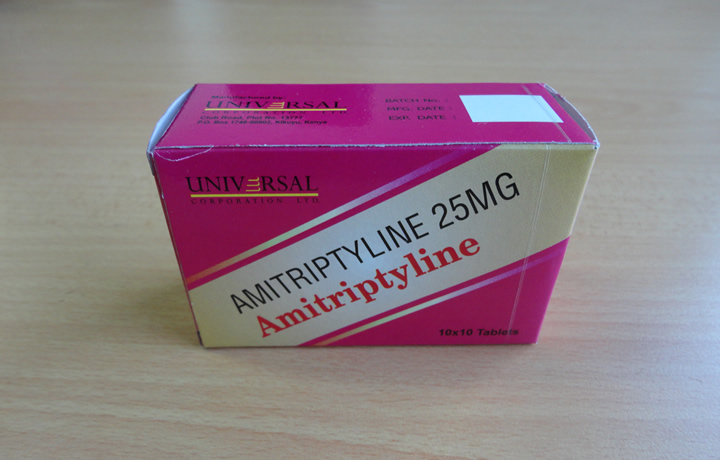
Amitripyline
Pharmacological Classification.
Psychoanaleptics.
Indications.
- Treatment of patients with endogenous depression.
- Alleviating anxiety or agitation that often accompanies depression. It has been used with benefit in depression of long or short duration.
Dosage and directions for use.
- Adults: Initially 75 mg to 150 mg daily in divided doses.
- Maintenance dose is 50 mg to 100 mg daily in divided doses.
Contra-indications.
Hypersensitivity.
- Avoid concomitantly with a monoamine oxidase inhibiting compound.
- When it is desired to substitute amitriptyline for a monoamine oxidase inhibitor, a minimum of 14 days should be allowed to elapse after the latter is discontinued. Amitriptyline should then be initiated cautiously with gradual increases in doses until optimum response is achieved.
- Acute recovery phase following myocardial infarction because it has been reported to produce arrhythmias, sinus tachycardia and prolongation of the conduction time.
Concurrent administration with antihypertensive medicine, particularly adrenergic blocking agents such as Guanethidine.
Use in pregnancy and Lactation. Safe use has not been established.
Amitriptyline should not be given to children under 12 years of age.
Side-effects and special precautions:
- Dry mouth, sour or metallic taste, constipation which may lead to paralytic ileus, urinary retention, pupillary dilatation with blurred vision and disturbances in visual accommodation, palpitations,tachycardia and impotence.
- Drowsiness, headache, peripheral neuropathy, tremor, orthostatic hypotension, hypertension, dizziness, sweating, weakness and fatigue, ataxia, epileptiform seizures, extrapyramidal symptoms including speech diffi culties, tinnitus, stomatitis and gastric irritation with nausea and vomiting.
- Confusion or delirium in the elderly.
- Anorexia with mass loss or mass gain may occur.
- Amitriptyline should be used with caution in patients with cardiovascular disease and should be avoided in the immediate recovery phase after myocardial infarction and in patients with heart block.